9 underrated climbers for color, shade and privacy – the beguiling, resilient, and often-overlooked vines you need to discover
With spectacular foliage, blooms, fruits and seedheads, these underrated climbers will refresh your yard's less-than-lovely walls and fences
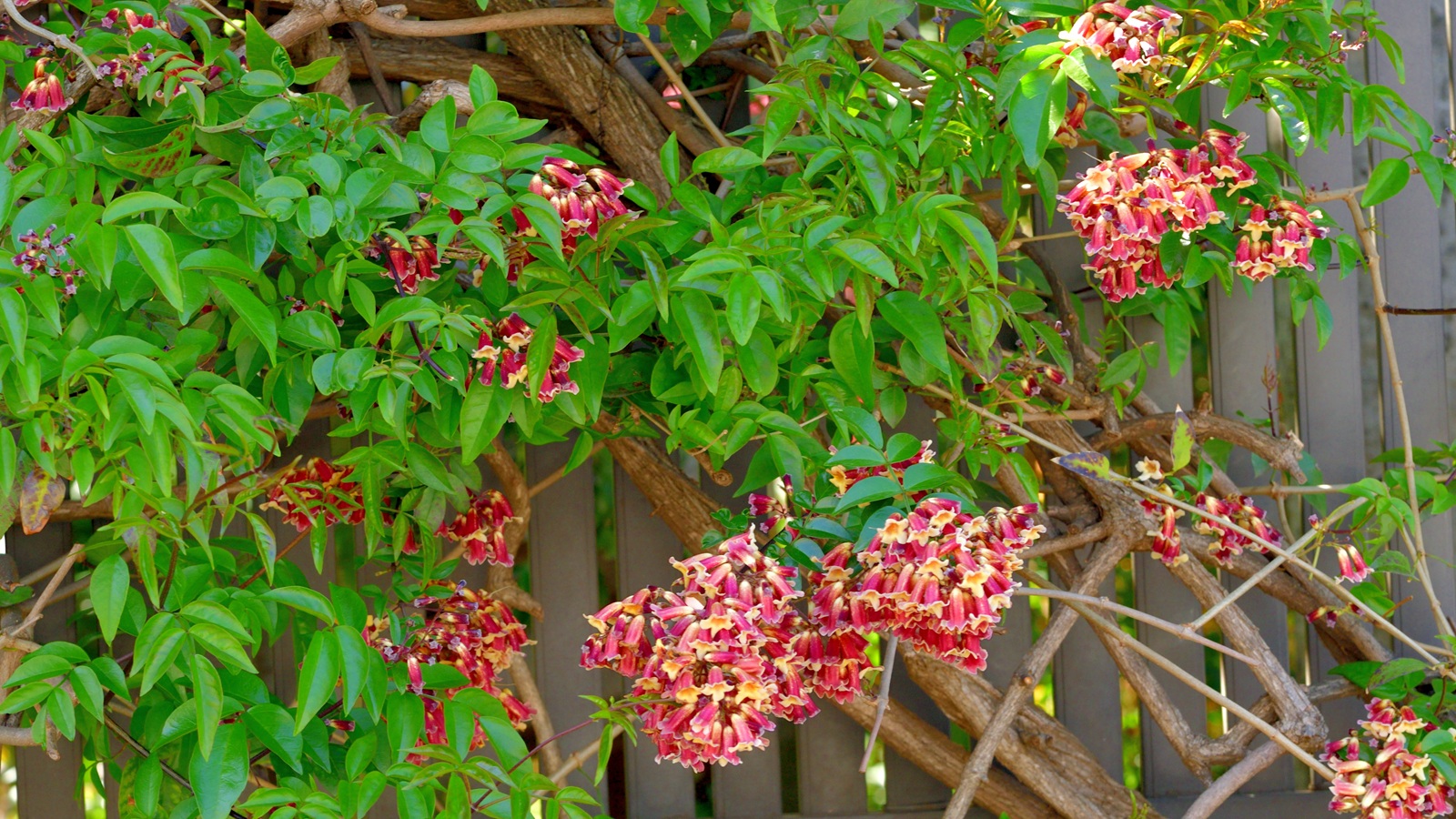

Finding out about these underrated climbers is like being granted access to a landscape architect’s little black book. The quiet, hardworking vines of the garden world, they offer something different to the showier classics such as wisteria and Boston ivy, they create intrigue and fascination plus give us a chance to broaden our horticultural knowledge.
There are lesser-known climbing plants for practically every situation, so consider the effect you wish to create; do you need to cover a small arch, pergola or a large expanse of unsightly wall. Take a close look at the growing conditions, the type of soil available and whether it retains moisture or is exceptionally free draining. While it is possible to amend these conditions slightly, it’s worth choosing the right plant for the right place, for best results.
As with other underrated plants, discovering these varieties for the first time is a real inspiration and can lead to new planting opportunities and exciting floral and foliage, color combinations. Many also attract specific pollinators, birds and mammals into the yard, so can help support local wildlife and boost the health of your garden too.
9 underrated climbers worth getting to know
Ready to take a fresh look at some lesser known climbers, well you are in luck. We asked experts to share their favorite, unsung heroes and tell us how they can transform our yards.
Rosa 'New Dawn'
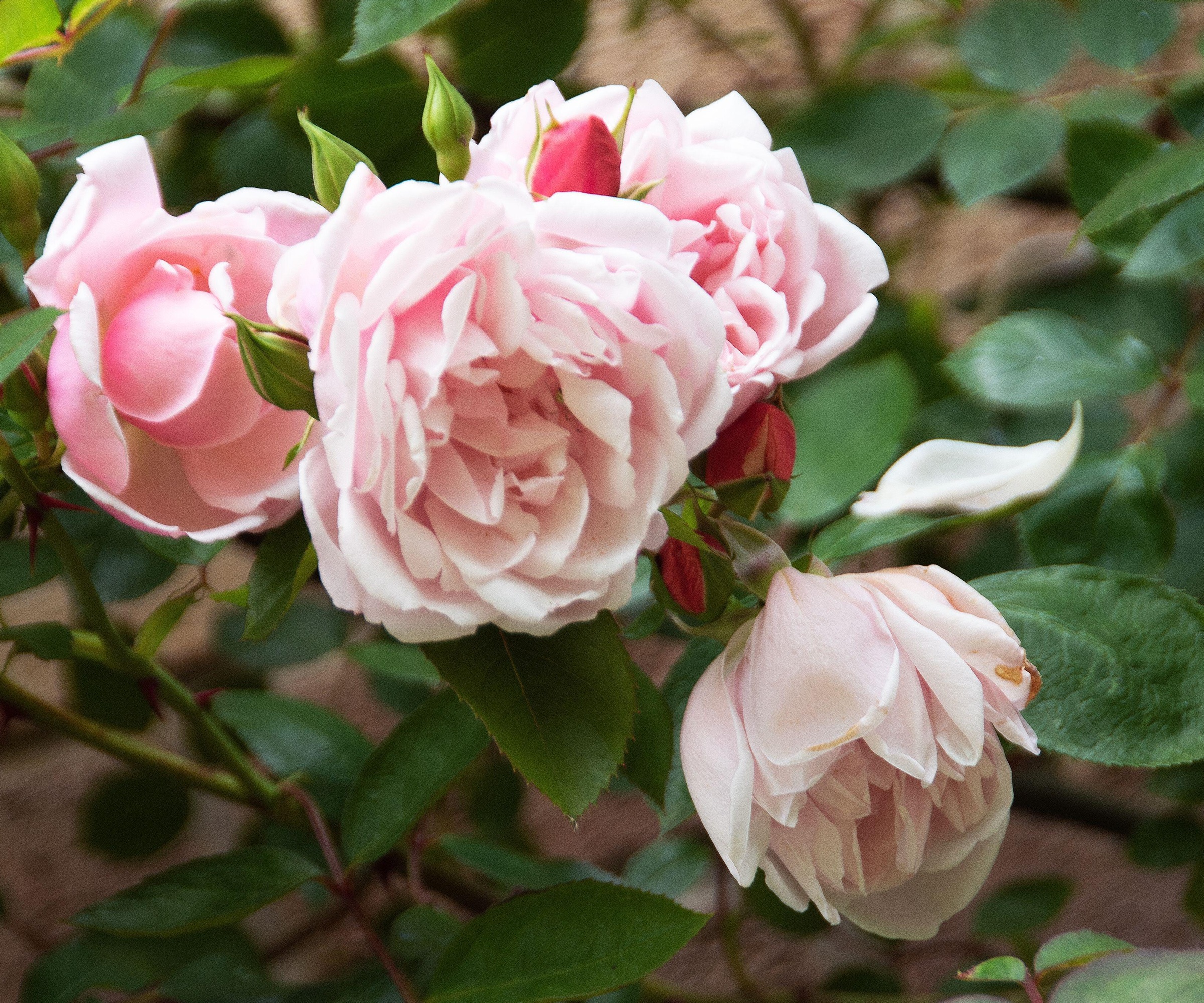
A dreamy soft pink rose with a light fragrance, Rosa ‘New Dawn’ may look delicate and romantic, but don’t be fooled. ‘This is a rose of extreme resilience,’ says Kelly Funk. ‘One of the toughest and most disease resistant climbing roses, it’s hardy to USDA Zone 5, and even tolerant of poor soils.’
The glossy deep green foliage highlights the pale petals to perfection without any danger of blackspot or yellowing ruining the effect.
Reaching heights of around 10ft (3.2m) with a spread of 8ft (2.5m), this award-winning rose; a proud winner of the RHS Award of Garden Merit, is happy in most types of soil and loves a sunny or part shady spot.
Design expertise in your inbox – from inspiring decorating ideas and beautiful celebrity homes to practical gardening advice and shopping round-ups.
‘Unlike many climbers, it reblooms through the season, giving extended food sources for pollinators,’ adds Kelly. Surely it has to be one of the best climbing roses available.

Kelly is the president and CEO of Jackson & Perkins, a renowned online nursery with roots dating back to 1872 and a storied reputation for cultivating exceptional roses. A passionate gardener herself, Kelly brings hands-on knowledge and a deep appreciation for plants to her leadership. Under her guidance, Jackson & Perkins continues to thrive as a trusted name for gardeners who value beauty, quality, and the joy of growing.
Virgins Bower Vine
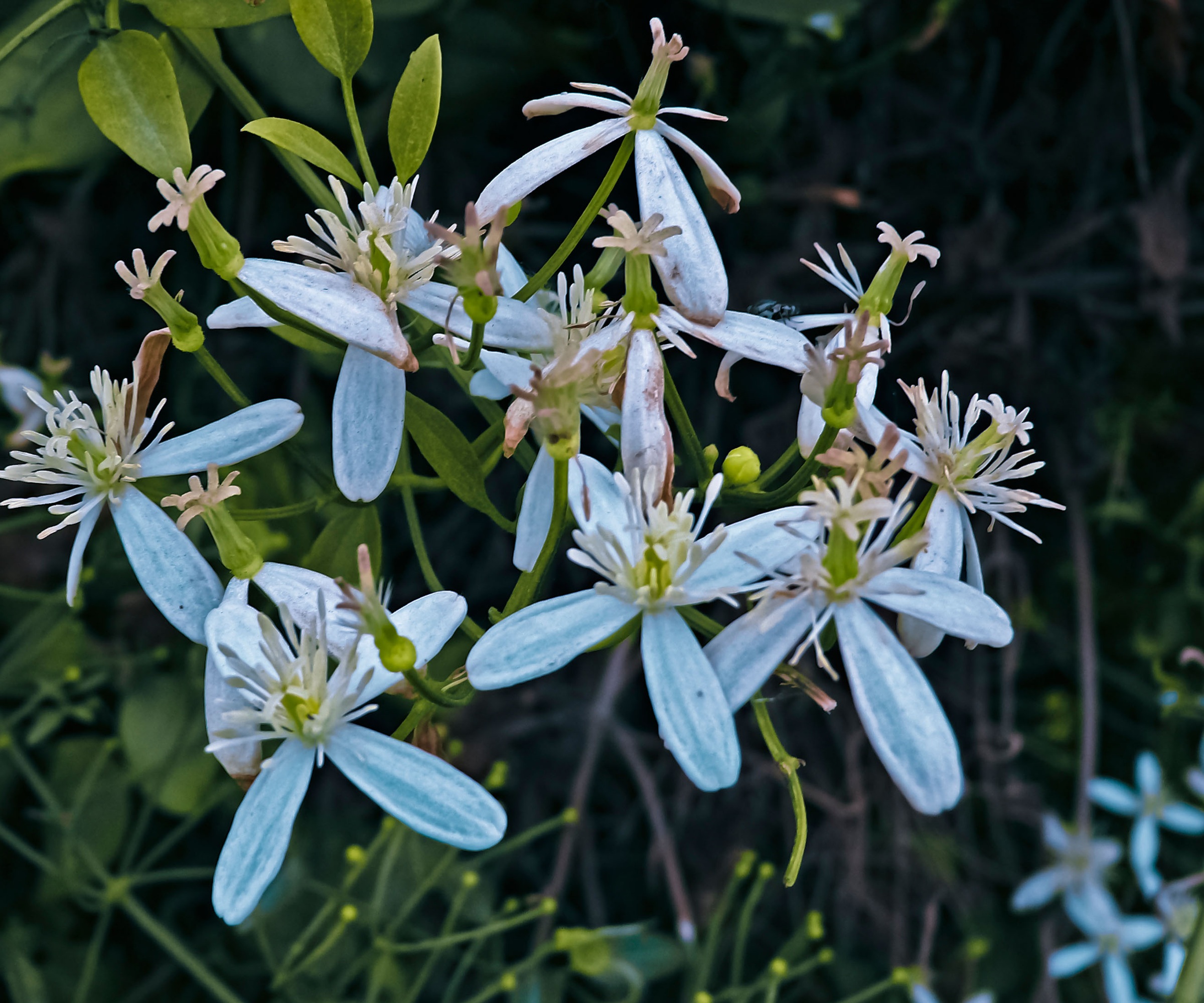
Besides brightening up dull yard boundaries and maximising growing space, planting climbers is hugely important for wildlife and increasing local biodiversity. Clematis virginiana, commonly known as Virgins Bower Vine, is an excellent choice for many reasons, as Mary Phillips, Head of Native Plant Habitat Strategy and Certifications at the National Wildlife Federation explains.
‘A vigorous growing vine that is not an aggressive spreader, this clematis has dense growth, providing excellent cover and nesting sites for birds and other small wildlife. The delicately scented clusters of white blooms are a magnet for pollinators from July to September, while the fluffy seed heads are a source of food for birds in winter.’
Growing in moist to medium well-drained soil, this deciduous, large scale climber will happily cover 10 - 20’ (3-6m) tall by 4 - 6’ (1.2-1.8m) wide within 2 to 5 years. Plant in full sun or partial shade. Hardy in USDA Zones: 3 – 9.
Climbing Aster
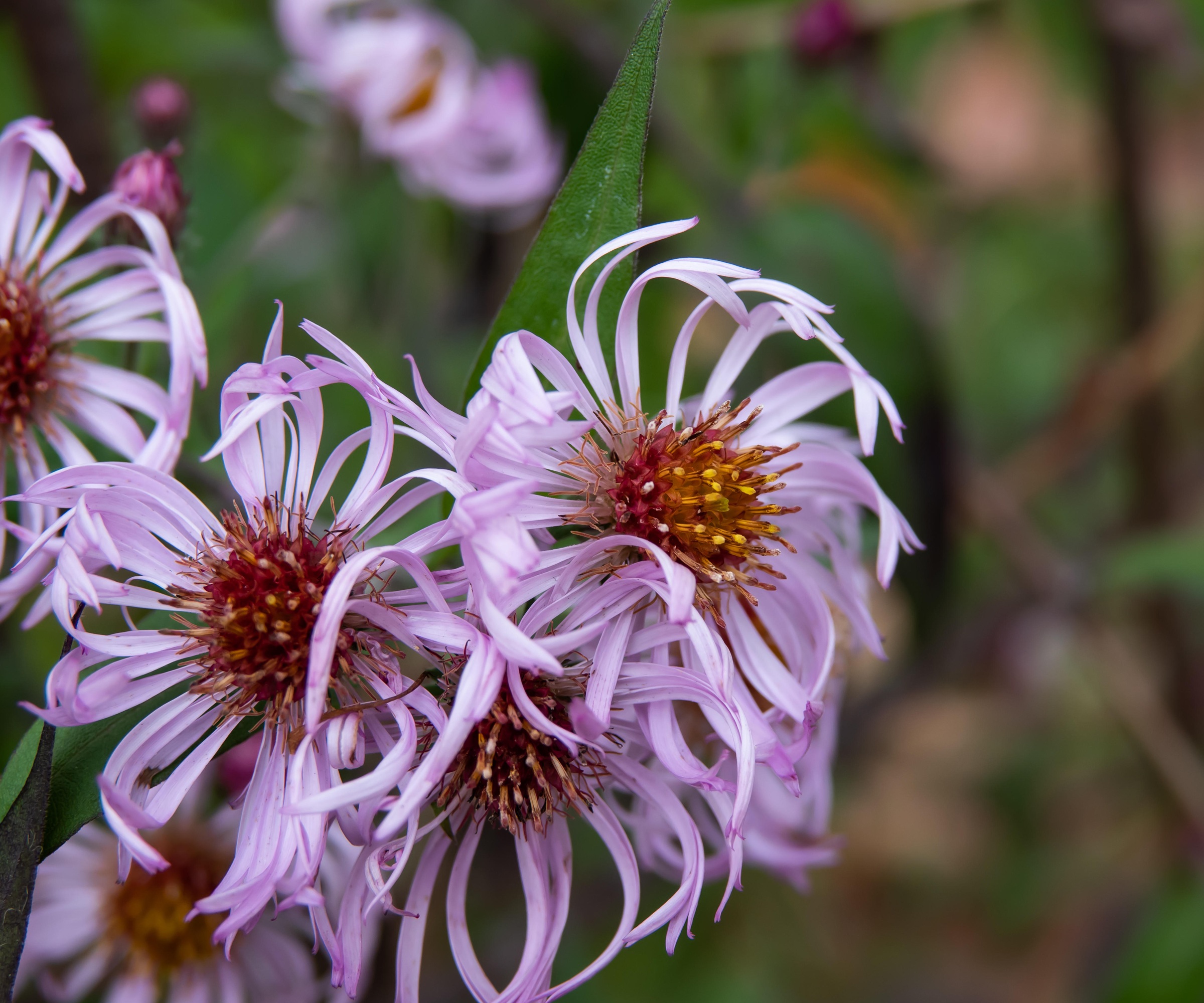
If you are looking for a delicately flowered and well-behaved climbing plant, that will flower well into fall then Aster carolinianus or Climbing aster is a fabulous choice. ‘A gentle climbing vine that won’t overtake the landscape, and can also be used as a groundcover, it bears a profusion of fragrant, daisy-like pink to purple blooms in September and October,’ says Mary Phillips.
‘Asters are a vital late-season nectar source for migrating monarchs and native bees, at a time when many other blooms are starting to fade.' She also adds, 'a larval host plant to several species of butterflies and moths, such as Pearl Crescent and Silvery Checkerspot butterflies, it’s a useful addition to gardens located in USDA Zones: 6 – 9.’
Best grown in full sun, in moist to medium well-drained soil this sprawling climber, or scrambler, will reach 6 -12’ (1.8 – 3.6m) tall by 3 - 6’ (90cm – 1.8m) wide once mature. The daisy-like flowers fade and transform into fluffy pompom shaped seedheads, that, ‘provide winter interest and food for birds in winter,’ says Mary.
Hydrangea Petiolaris
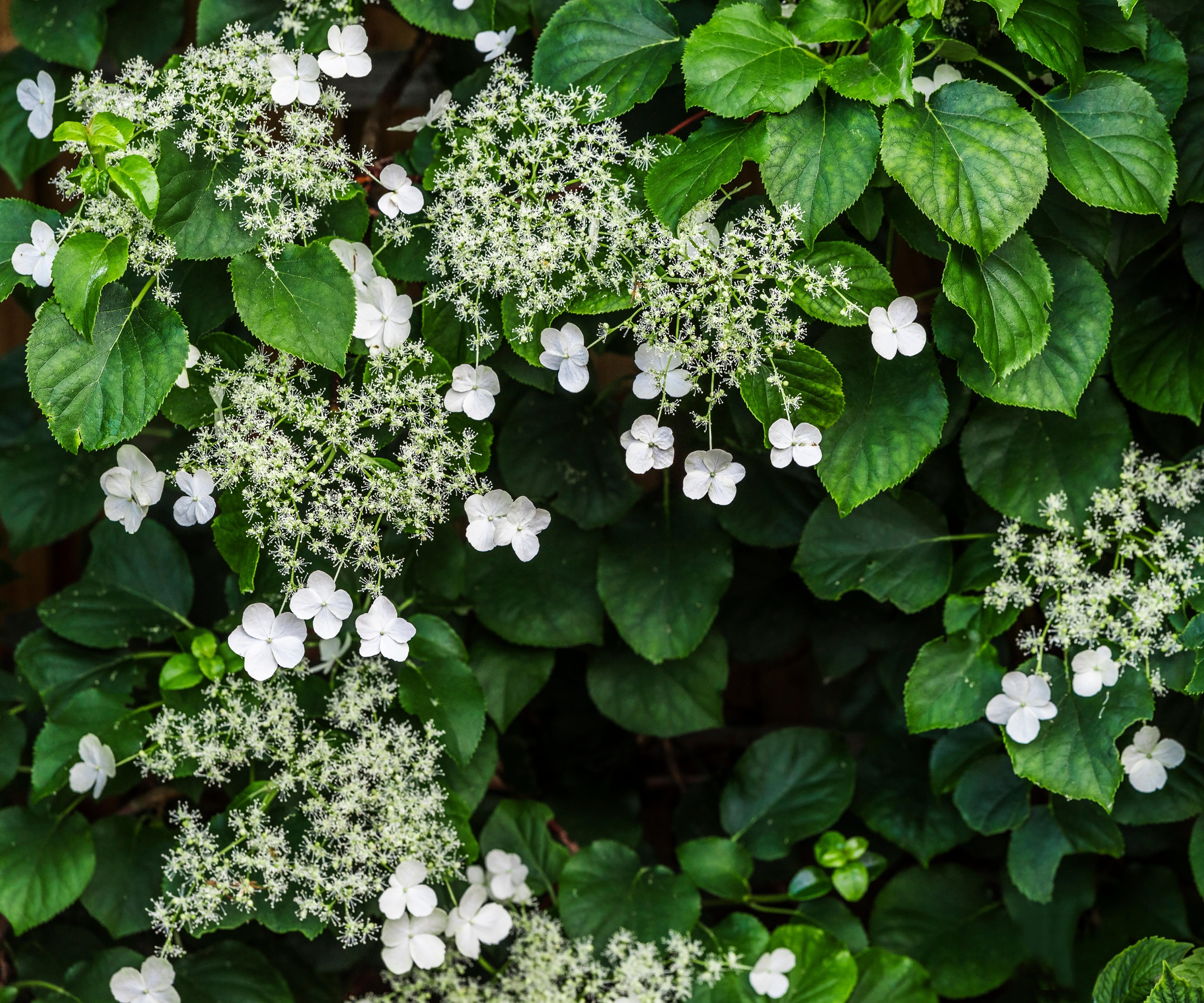
Hydrangea Petiolaris or climbing hydrangea prefers life on the cool, shadier side. Not as showy as sun loving roses, clematis and wisteria and with a subtle perfume, it is often overlooked for these prime-time climbers which is a real shame.
Delicate flat clusters of open white blooms shine out against the green glossy leaves during the summer months, creating a refined and elegant display. Foliage turns yellow in fall, adding to its charms.
A deciduous, self-clinging climber this plant may be slow to establish, but it is long lived, eventually covering 39ft (12m) tall and 26ft (8m) in 20 years. Best suited to USDA hardiness zones 4 to 9 it prefers moist, well drained soil and a sheltered spot.
Coral Honeysuckle
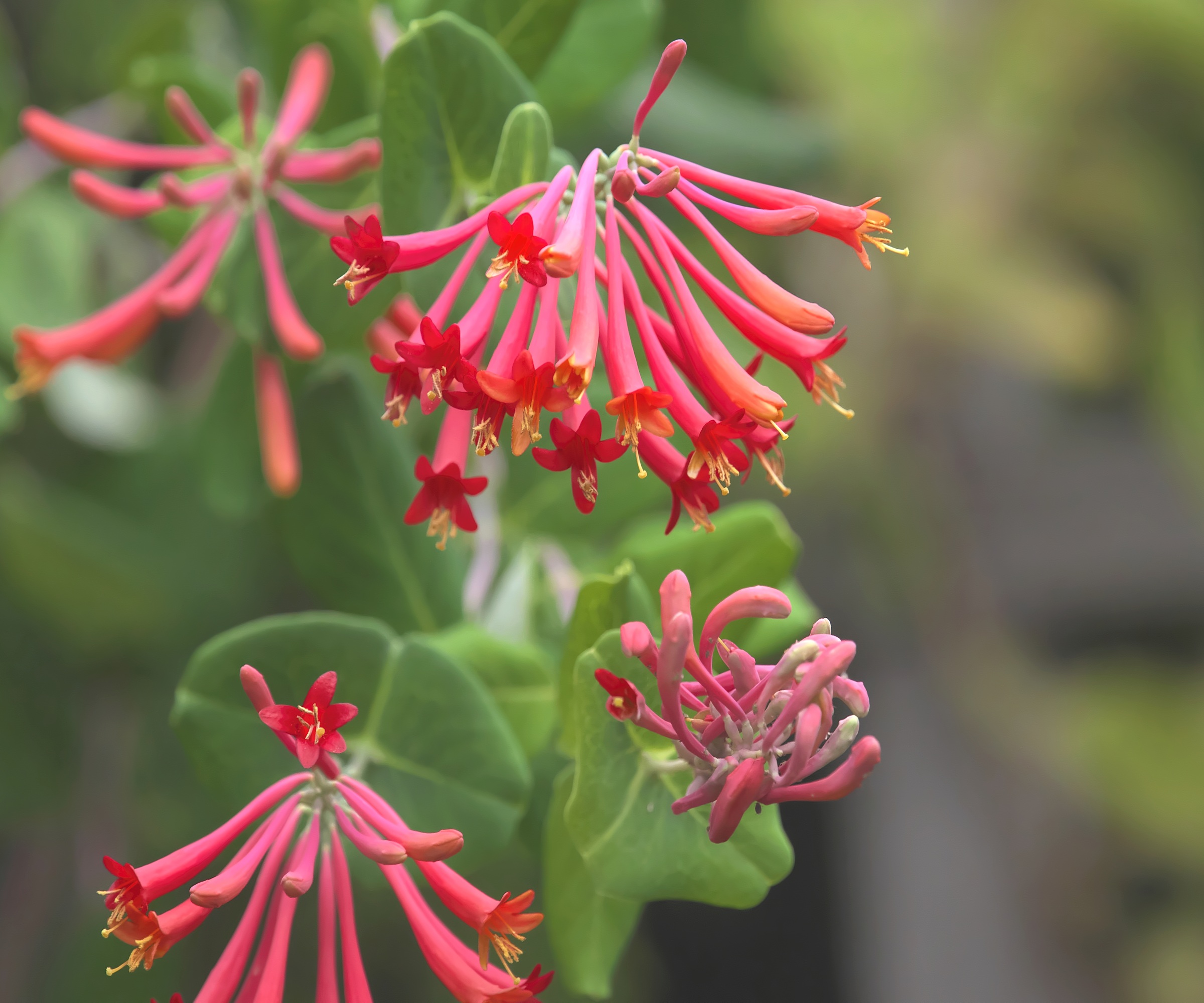
Simply stunning are the words used to describe the coral honeysuckle when in full bloom. With it’s a mass of pink-red trumpet shaped flowers, tinged with orange, they are a fascinating and undeniably cheery sight with the bonus that their blooms last longer than other honeysuckle varieties.
‘Lonicera sempervirens has an extra-long blooming season, lasting from March to September,’ explains Mary Phillips. ‘Their trumpet-shaped blooms are a magnet for hummingbirds, these then give way to red berries in the fall, that attract a variety of songbirds.’
With a twining habit and evergreen or semi-evergreen blue-green foliage, this medium sized climber is ideal for training up walls, trellis and has to be one of the best plants to grow up a pergola.
Place it near to the house where the fragrant blooms can be enjoyed. We think Lonicera sempervirens would look stunning scrambling over this curved wooden garden arbour from Walmart.
Suited to USDA hardiness zones 4-9, it will happily reach 10 - 20’ (3-6m) tall by 3 - 9’ (90cm – 2.70m) wide in around 20 years. This sun lover will also cope in part shade but does prefer moist yet well-draining soil.

Mary is Head of Native Plant Habitat & Certifications at the National Wildlife Federation, is an ambassador for native plants. Her work ensures all habitat programs and resources are rooted in sustainable practices and the latest science.
Chocolate vine
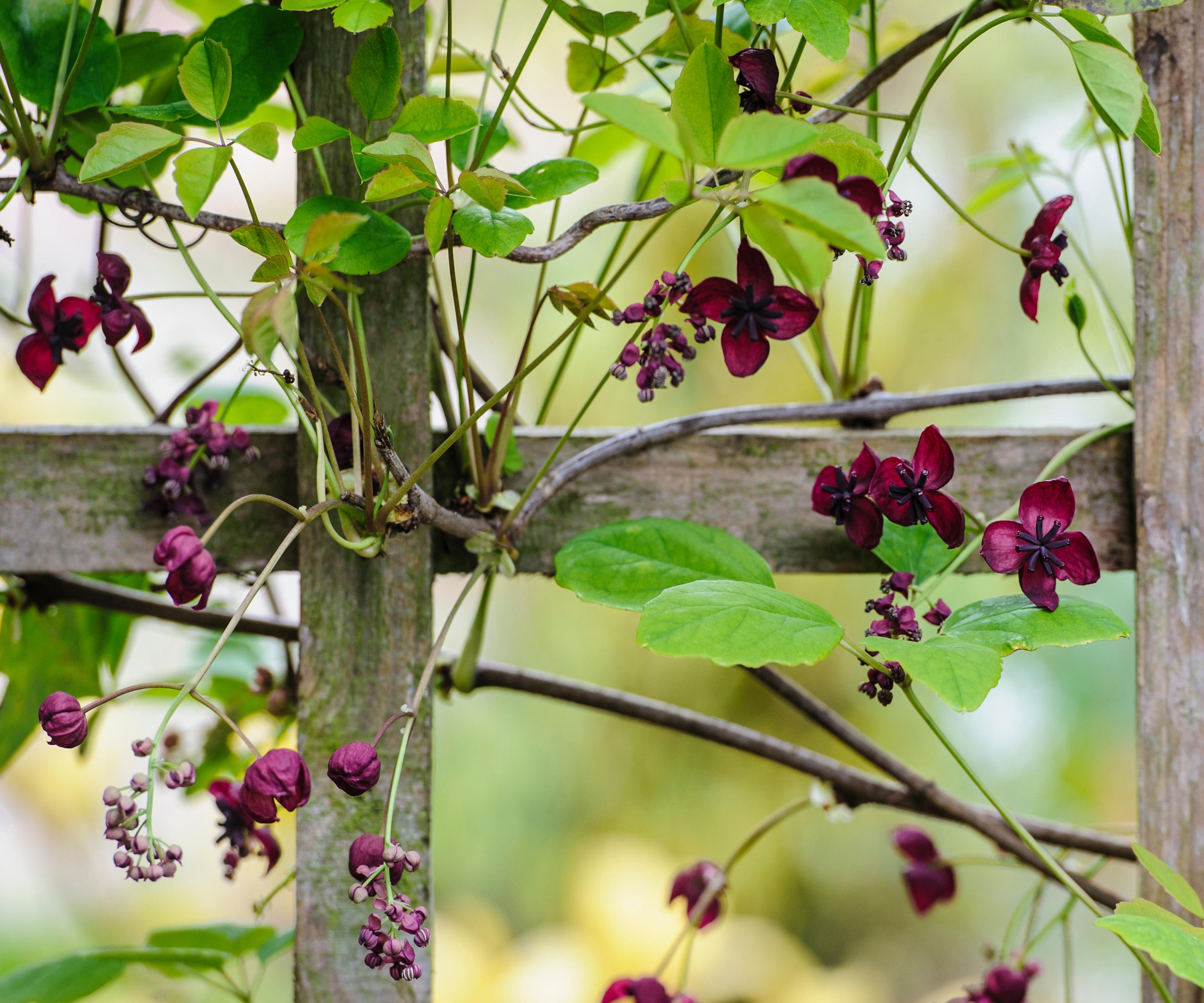
An easy-going, pest and disease resistant climber that also has a spectacular leaf shape and unusual flower may seem too good to be true, but Akebia quinata or chocolate vine really is exceptional.
Often championed by garden and landscape designers but seldom known by home gardeners, this self-twining climber is hugely underrated and one of the best fast growing climbing plants.
‘Akebia quinata has the most beautiful palmate 5-leaf structure that is a compliment to the unusual, deep chocolate-purple blooms,’ says Landscape Architect Stacilyn Feldman.
‘It’s long been used in Eastern medicine and has a fragrant, almost chocolatey scent. It’s native to Asia and should be used only under careful watch in a home garden.’
Reaching up to 32ft (10m) with a spread of 6.5ft (2m), this hardy perennial, suited to growing in USDA zones 4-9, will happily scramble over arches, pergolas and trellis with little attention or clipping needed.
Plant in a sunny or part shady spot with moist, yet well drained soil. Akebia quinata plants are available from Portland Nursery, be sure to check out their pale yellow variety Akebia quinata 'Shirobana' too.
Crossvine
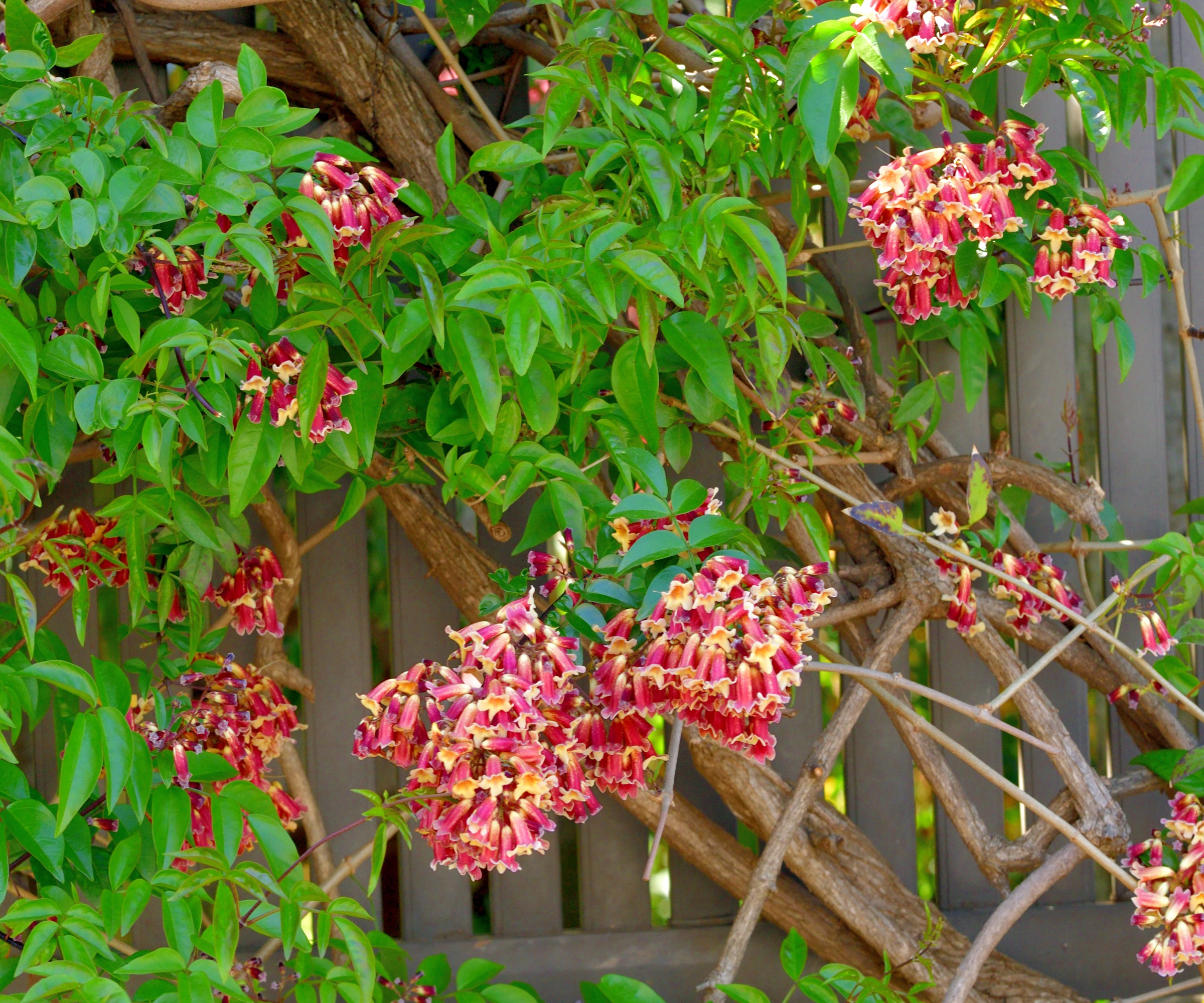
Perhaps the most flower laden vine of all is Bignonia capreolata, also known as Crossvine. With huge clusters of orange-scarlet blooms continually appearing for weeks throughout March, April and May, it’s a glorious sight scrambling across garden structures and through shrubs and trees, thanks to its ‘holdfasts’ or natural suckers.
‘Crossvine (Bignonia capreolata) is a great choice for show-stopping color that’s quick to make itself at home,’ says Stacilyn Feldman. ‘The vibrant leaves quickly cover trellises and give way to trumpet-shaped flowers that are attractive to hummingbirds and butterflies. This climber is also drought tolerant.’
Up with the best evergreen climbers, with its oval and waxy deep green leaves, this magnificent plant can reach up to an impressive 36ft (11m). It does have a high flammability rating though, so be sure to plant it outside your home’s defensible zone.
Suited to growing outside in USDA zones 6-9, it prefers moist but free-draining soil in an area that receives full or part sun.

Stacilyn Feldman is a celebrated landscape architect known for her planting design and detailing in botanical gardens, residential estates, green roofs and urban development in Washington, DC, New York City and across the United States. Stacilyn holds a Bachelors of Landscape Architecture from The Pennsylvania State University.
Hyacinth bean
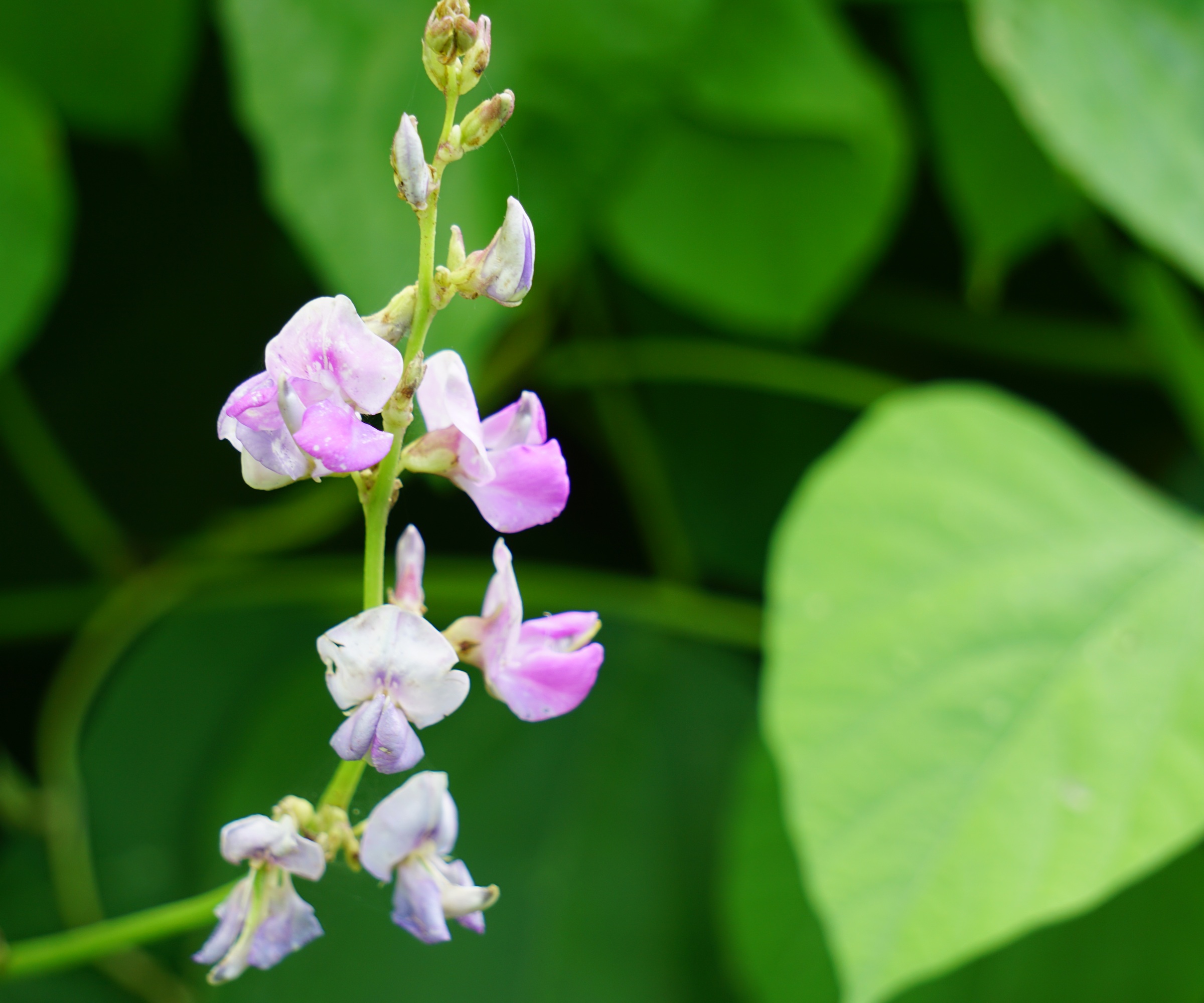
Known by some gardeners for its ornamental blooms and heart-shaped leaves, lablab purpureus, commonly known as the hyacinth bean, is also a nutrient rich crop that can be used for its protein packed beans and spinach-like leaves.
Native to Africa and widely grown in warmer climates such as India and Sudan, it has fallen out of favor in western regions due to a lack of commercial interest as a food source. While the leaves and flowers are edible raw, the beans must be boiled to remove toxins.
Today, many home growers are keen to try growing this twining perennial not just for it’s fragrant purple and white pea-like flowers but for the green pods and edible beans too.
Dark green-purple leaves also add to the fascination and visual appeal, making this an unusual but forward-thinking plant choice, as hyacinth bean is one of many drought tolerant climbing vines.
Slow to germinate from seed, these plants will reach 26ft (8m) high and 8ft (2.5m) wide in full sun. Grow as a perennial in USDA hardiness zones 10-11 or treat as an annual in zones below 10. Amazon sell untreated hyacinth bean seeds to raise at home.
Variegated kiwi vine
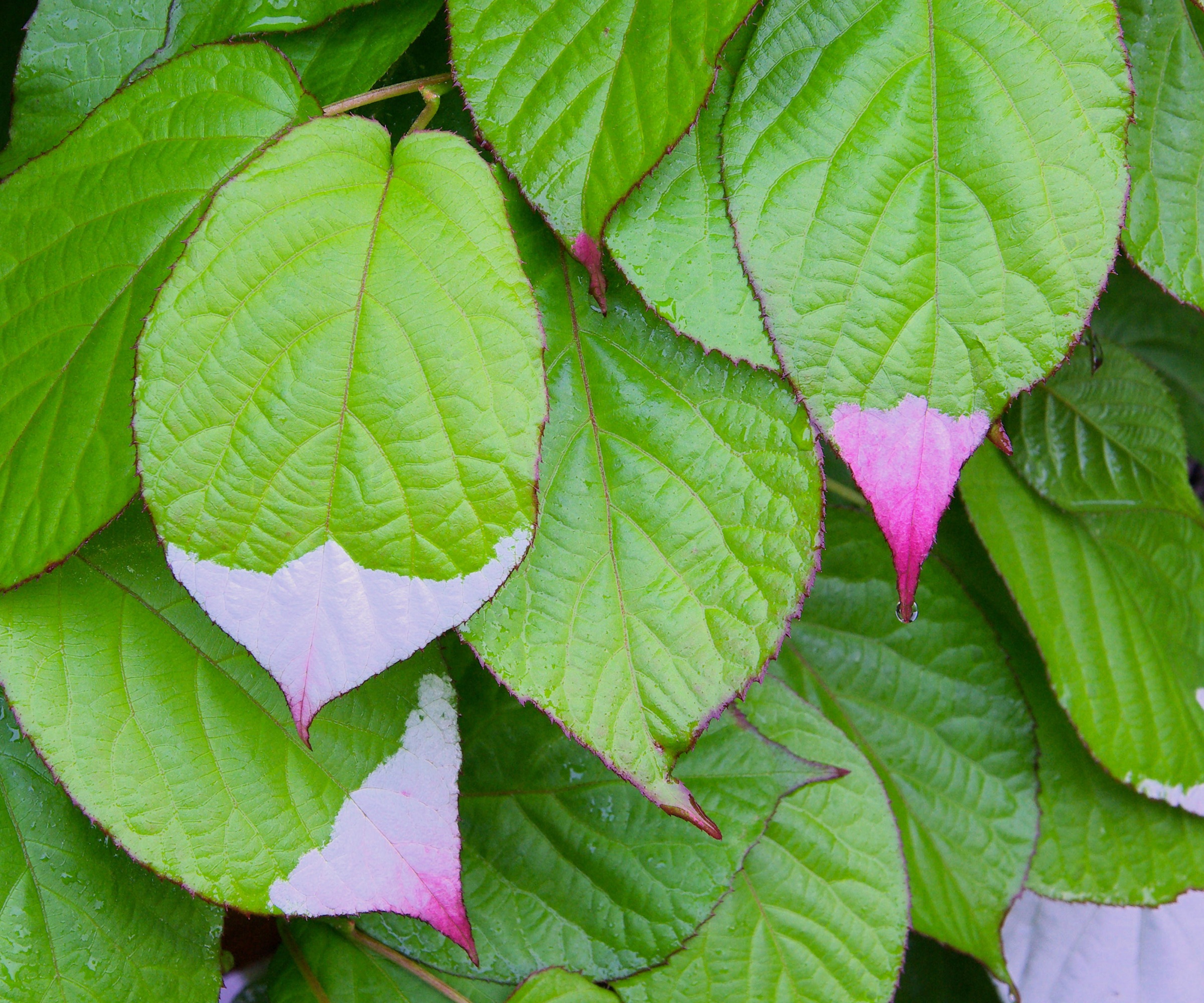
Botanically known as Actinidia kolomikta, variegated kiwi vine is often overlooked as it takes a few years to produce the stunning ‘paint splashed’ coloring it is prized for.
Although attractive, for the first two or three year the heart shaped leaves are entirely lime green, often leading this deciduous climber to being regarded as tricky to grow and a frequent failure.
In fact, it’s only once the plant is well established that the foliage produces spectacular splashes of white and pink. Partly due to the absence of chlorophyll in some areas of the leaf, plus the foliage’s unique internal structure and the presence of anthocyanins, its the upper sections of the climber that usually bear these beautiful haphazard splashes of color.
Preferring a sunny, sheltered spot, this eye-catching climber, and one of the best plants to cover a wall, will reach 16ft (5m) tall and around 13ft (4m) wide within a few years.
Plant in moist, free-draining soil and tie on to horizontal support wires, such as this wire trellis kit from Walmart, at regular intervals.
Hardy in USDA zones 3-8, variegated kiwi vine will produce small, white fragrant flowers in early summer. Small edible fruits will form after, but only when pollinated by a nearby male plant.
Climbing plants are highly useful in any size yard or climate. With endless flower, foliage and growing habits to choose from, narrowing down a wish list can prove tricky. Some varieties are better at certain garden tasks than others, such as the best climbing plants for arches and the best plants to cover a wall so do investigate before finalising your selection.

Journalist Jill Morgan has spent over 20 years writing and editing gardening, interior and property features. Titles she has worked on include The English Home, House Beautiful, Ideal Home, Houzz and Modern Gardens and she writes regularly for H&G as a Contributing Editor. Whilst she is a dab hand at renovation projects and DIY, she is happiest when out digging in the garden or planning a new border.
You must confirm your public display name before commenting
Please logout and then login again, you will then be prompted to enter your display name.